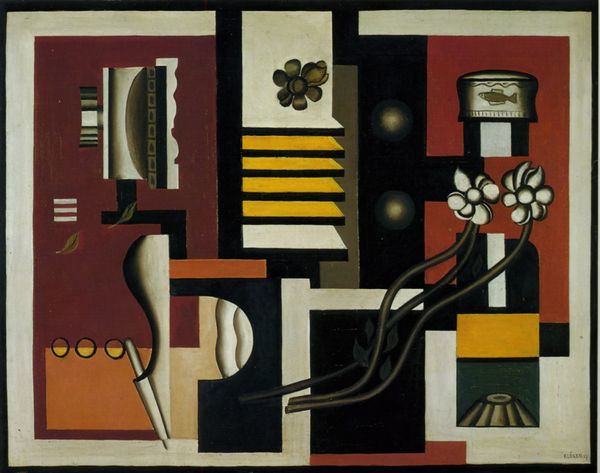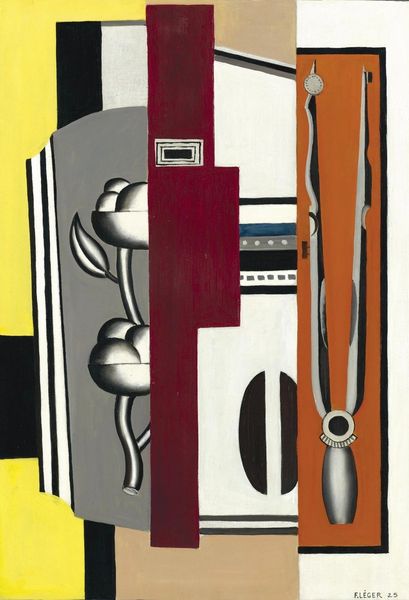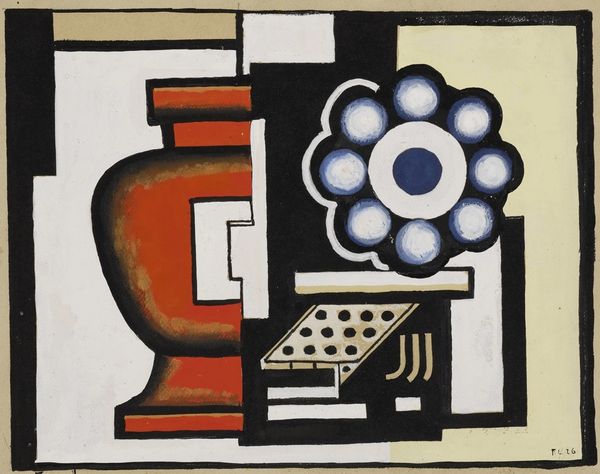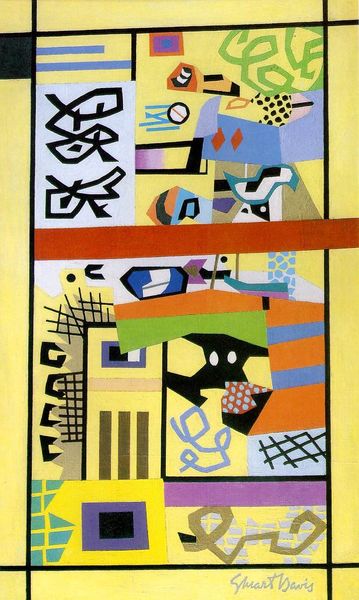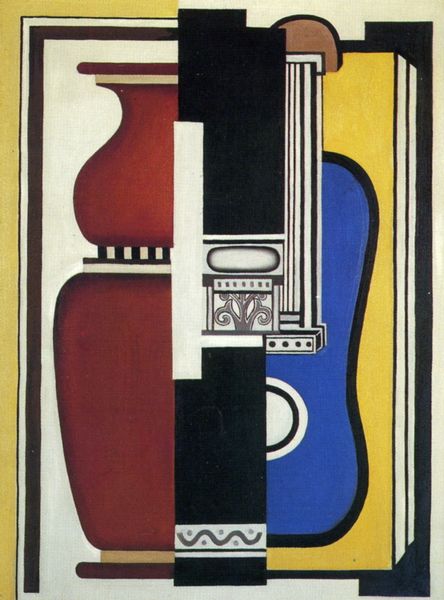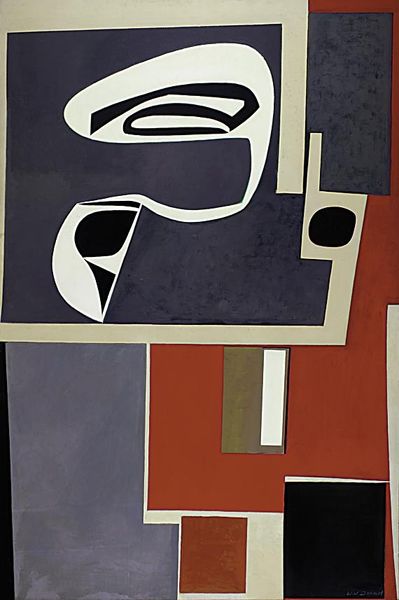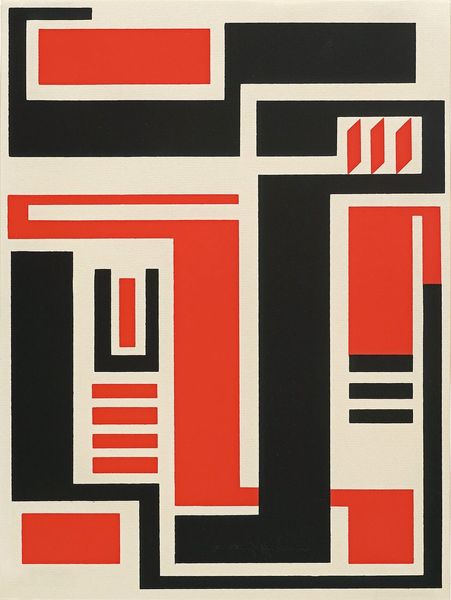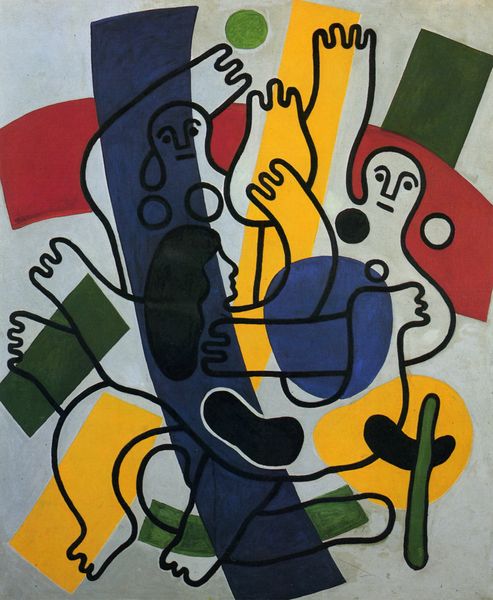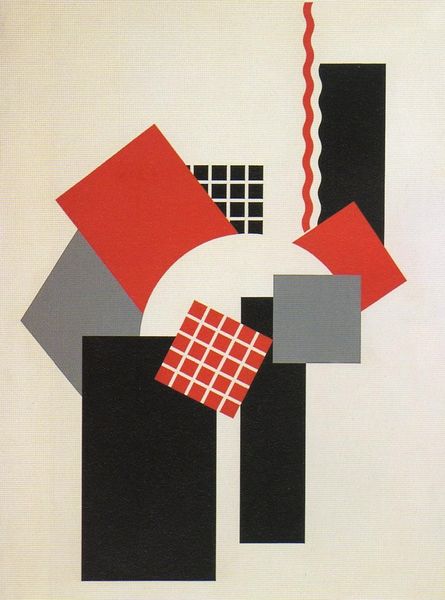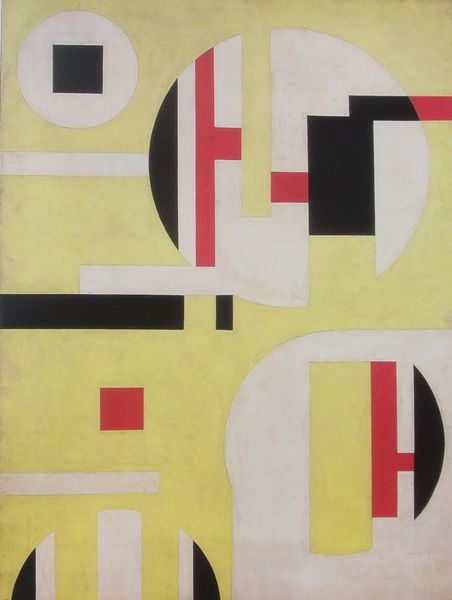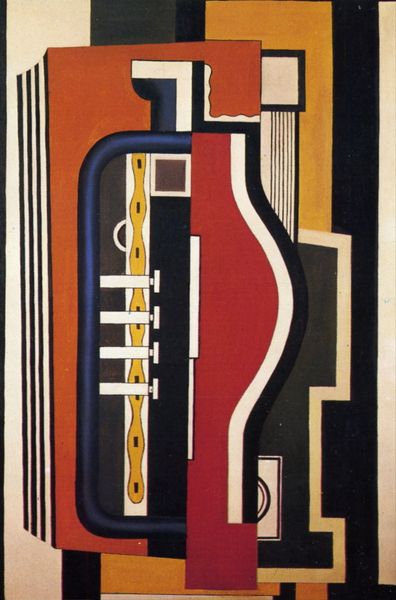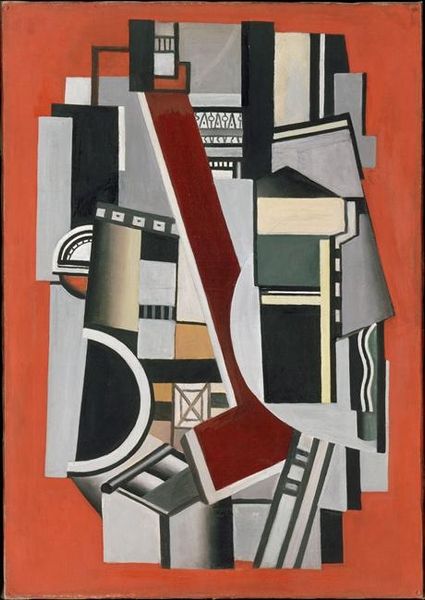
painting, oil-paint
#
cubism
#
painting
#
oil-paint
#
geometric
#
abstraction
#
modernism
Copyright: Fernand Leger,Fair Use
Curator: This is Fernand Léger's "Ball bearing", an oil painting from 1926. Editor: My first impression is how powerfully it balances bold geometry and industrial shapes. It feels like a machine celebrating its own mechanics. Curator: That's a very apt description. Léger was fascinated by the dynamism of the machine age and this piece really reflects that. It's part of a broader artistic trend reflecting the idealization of industrial progress that was taking hold across art in that era. Editor: Absolutely, and I think Léger really elevates these mechanical elements. Look at the colors. There's a real awareness of form and material beyond mere representation, but more an industrial aesthetic. The red evokes not just function, but the application of new types of materials as signifiers. Curator: Right. And it’s impossible to separate this work from the historical context of post-World War I Europe, with its emphasis on rebuilding and modernization. Artists at the time were attempting to redefine what it meant to be modern. Léger certainly wanted his art to have a distinctly contemporary voice and reflect a move toward socialist utopia, a mechanized dream for everyone. Editor: Exactly. You see it also in the labor-intensive precision. Those forms aren’t accidental. It represents the shift in production methods and the idealization of industry – each meticulously-rendered element reflects skilled work but one that serves an ever powerful mechanical progression of capitalist value. Curator: He even collaborated with architects and filmmakers. For Léger, the role of the artist was to integrate art into everyday life, reflecting new modern systems. Editor: Yes, it's art with a purpose. To showcase both the possibility and maybe, unknowingly at the time, the dehumanizing prospect inherent in an economy fueled by the gears of an industry, which even then consumed almost everything it touched. Curator: So while the optimism may seem somewhat naive from a 21st-century perspective, it's important to understand the utopian spirit driving these artists. Editor: I see this piece as a historical relic but equally as a visual analysis of form, material, and making which helps me reflect on where we are today. Curator: Indeed, and perhaps that examination encourages us to see the way art can participate with our present day understanding and concerns, too.
Comments
No comments
Be the first to comment and join the conversation on the ultimate creative platform.

